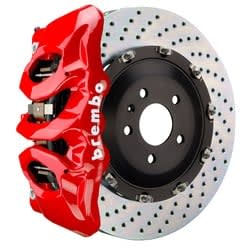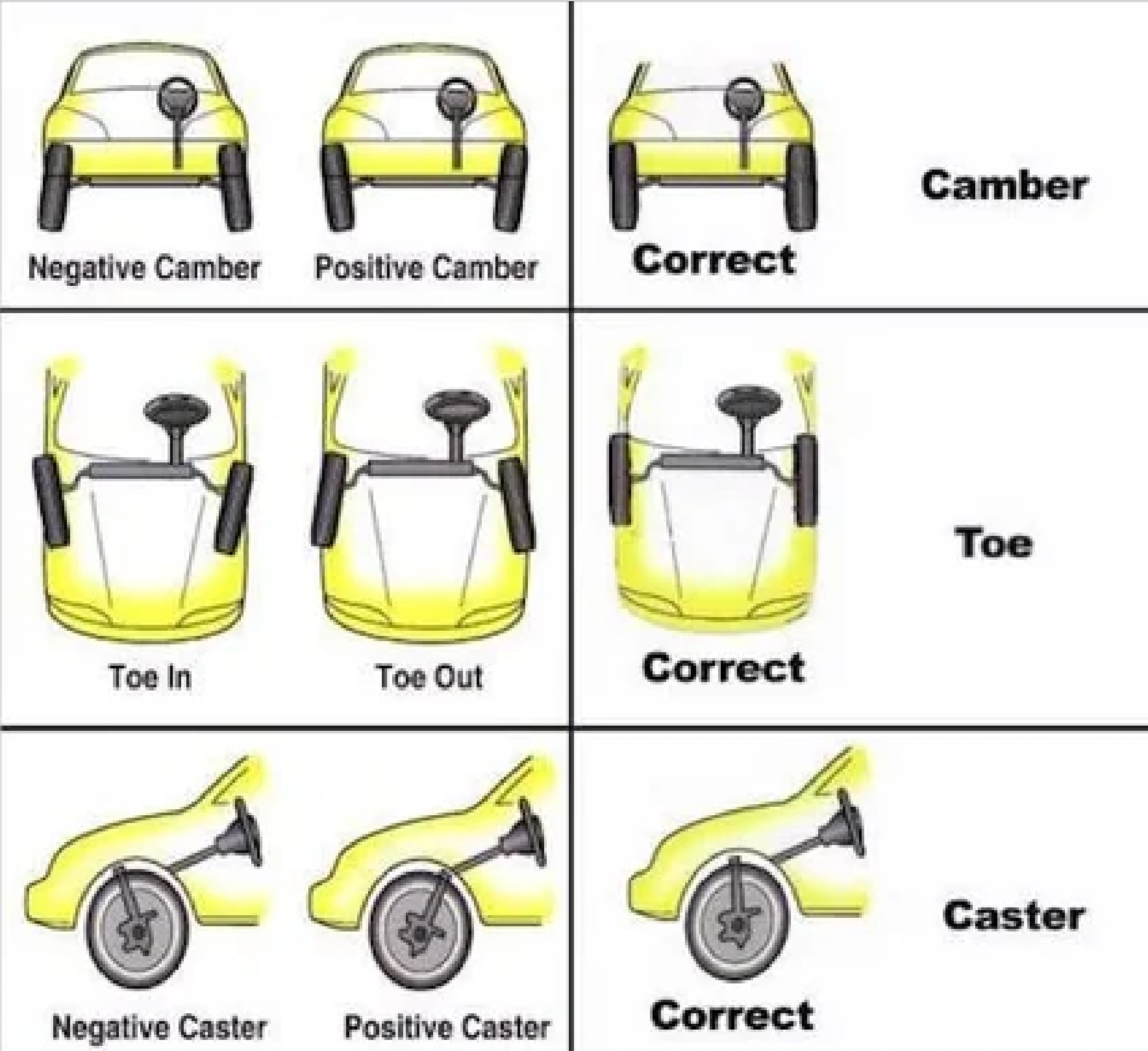Continuing the motorsports series.
Sports cars, the kind you encounter out and about, amuse me. And saddens me. For sure, most have potential, but they're not set up for sport, nor will they see it in their lifetimes. Functionally, they're set up to be commuter cars that can accelerate a bit faster, sound and look cool, and signal wealth. They'd struggle on the race track, if not be outright dangerous to drive. I want to tell you what makes a racecar different.
Mostly, it's making different tradeoffs. Arguably, a modern street vehicle has had just as much engineering go into it as a race vehicle; the difference is that they've been optimized for different things. One for getting around a circuit as fast as possible, the other for comfortably and cheaply transporting you between A and B.
In what follows, I will be discussing differences between a "stock" production vehicle and a production vehicle that's been modified ("prepped") for race track usage.
Brakes
If you want to get a car ready for the race track, the first modifications you will make will be to upgrade your brakes. A surprising fact is that the brakes of street-car can generate as much stopping force as high-performance brakes, including big, impressive-looking "big brake kits". That is for the first few stops. The size of performance brakes is mostly not about getting higher peak brake force; it's about maintaining braking power despite immense heat.

Braking works via friction, and the friction generates heat. On the street, braking is light and infrequent. On the racetrack, a driver is braking as hard as they can repeatedly before turn after turn after turn, with the brake temps reaching into the thousands of degrees. Ordinary brake pads (pieces of "friction material" that get pressed against the brake discs to create friction) will melt.
There are various desirable properties for brake pads: low price, high-temperature resistance, low brake dust (the friction material being rubbed away), and low noise (brake squeal). If you pay more, you can get more of all the properties in exchange for $$. For a fixed price, you have to choose.
There's also the braking power vs temperature. How much "bite" at cold-temps vs "warm temps"? Race brakes can be worse at low temperatures in exchange for better high-temp performance.
Street brakes pick low noise, low brake dust, and low to medium price. Racetrack prepared cars pick temperature resistance.
Brake fluid and brake lines
The above was just about the pads. Other pieces of the brake system are relevant too. Brakes are actuated by hydraulic fluid. That fluid gets hot and can even boil/vaporize, which you don't want. Track-prepared use fluid handle higher temps. What's the tradeoff? (There's always one.) Brake fluid gradually gets contaminated by moisture that readily vaporizes when it gets hot. Race brake fluid, therefore, needs to be replaced often, whereas street brake fluid can last 2-3 years. It's pretty annoying to replace.
Also, the fluid runs via lines (little tubes). By default, street cars will have steel-line rubber lines. In a track-prepped car, you replace them with stainless steel braided lines that won't distend under heat and pressure. That's the first car mod that I ever performed.
Tires
Motorsport is the challenge of getting all the grip possible from your tires – reaching their limit. But it sure helps if the limit of your tires is higher.
| Street Tires | Motorsport Tires |
|
|
 street tire, many grooves to allow water to channel out |  limited grooves on this tire, less safe in the rain |
The standard measure of how grippy/how quickly tires wear out is "treadwear". Street tires have 500-700tw. Performance tires are usually 200tw, though there's a lot of variation both in grip and wear rate, even with the same treadwear rating.
Suspension
Springs
The most central part of a car's suspension is the big springs that support ("suspend") the car on top of its wheels. The springs can compress and extend. If one wheel goes over a bump, that spring supporting that wheel can compress and the car as a whole doesn't move much. If the wheels were rigidly attached to the frame, one wheel being moved up or down would necessarily move the whole vehicle.
Through this, the suspension provides both comfort and also keeps the wheels in contact with the road surface (maintaining grip and traction).
For a street car, comfort is relatively more important. You want to soak up those bumps so the occupants don't feel them. Softer springs do this better than stiffer ones.
Ah, but there's a tradeoff! Always a tradeoff. As I explained in the previous post, whenever a car experiences acceleration (forward, back, left, or right), it experiences a torque that shifts its weight between the wheels. If you have soft springs, the car will roll and flop around a lot more under acceleration, making it harder to drive and creating large differences in the grip each wheel is experiencing. To limit this weight transfer, performance vehicles have stiffer springs, often dramatically stiffer (5-10x). The cost is that you feel the bumps in a high-performance car[2].
In general, once a car has stiff enough suspension (true-race suspension), people treat it as too uncomfortable for the street.
A solution to the [wheel] alignment problem
You might imagine that the wheels of a car are simply attached upright to the sides of the car. Neat 90-degree angles. Not so: wheels and tires are angled somewhat along different axes and dimensions.
The major ones, those set during a wheel alignment, are camber, caster, and toe. A bit of toe-in is good for stability, even though it increases wear, the same with caster.

Let's talk about camber, that's the first row of the image above. In driving, we want to keep as much tire in contact with the road as possible. That maximizes grip.
Here's a puzzle for you. High-performance vehicles used for sport run with a lot of negative camber. A lot of it. Why?

This maximizes the amount of tire in contact with the road surface during turns. Because the car is rolling in turns (even with stiff suspension), if the tire started out flat on the ground when going straight, during turns it would roll off the tire somewhat. By starting out angled, the car rolls onto more of the tire during the turn, maximizing grip.
What about when going straight? Indeed, grip is reduced then. However, when going straight, the tires have weight more equitably spread between them leading overall to more grip. Turns are a bottleneck. The weight distribution means the grip is mostly on one side of the car that's working very hard, and it's key to boost grip there. Hence, the cars are "set up" with negative camber.
Negative camber has the tradeoff of increasing tire wear, so street cars won't be set up with very much (about 1 degree, compared to 3+ for a track car).
Powertrain (engine, air intake, exhaust)
Quick notes on this one, it's really less important for the others and is the thing sports cars from the factory are fine on.
Larger air intakes and exhausts make more noise, and that's not just about sounding cool. Engines are bottlenecked on how much air they can get into the cylinders, so less restrictive intake and exhaust can help a bit. (Turbos and superchargers, collectively known as "forced induction", are ways to force more into an engine and get more power for the same-sized engine.)
Also, when out on track, it helps to hear what your engine is doing (what gear you're in, how hard you're revving) without looking at the gauges. A louder exhaust means you can hear that, whereas a quiet stock one can't be heard.
Safety
Licensed choose a different paradigm of safety than streetcars. Helmets, head and neck restraint devices (HANS), six-point harnesses, and welded cages in the place of 3-point seatbelts and a bevy of airbags. Also, fire suppression systems.
So why aren't sports cars actually race cars?
- They're typically running street tires chosen for longevity rather than maximizing grip[3].
- Their brake pads would fail under high temps and they've got low-temp brake fluid.
- The suspension is still optimized for comfort and the car would roll a lot in corners. Often less than non-sports cars, but a lot more than a track-prepped car. Also, advantageous wheel alignment settings for performance trade off with tire wear.
Thing is, if you perform the above modifications on many cars, they can be race cars. Mazda2, Honda Fit/Jazz, Mini Coopers – all low-powered vehicles that don't look at all sporty on the street, get modified and used in the B-Spec racing league
A warning
By the way, motorsport is expensive and time-consuming. Sometimes (often?) I wish a different hobby had chosen me.
- ^
The principles are true of race vehicles built from the ground-up for racing, e.g. a single-seater like an F1 car, but not every statement will apply.
- ^
Race tracks typically have a very smooth surface where it matters less. Take your car onto the streets of Oakland and it matters.
- ^
High-end sports cars do often come with tires that are a bit sportier than most cars, but still not actual track tires.